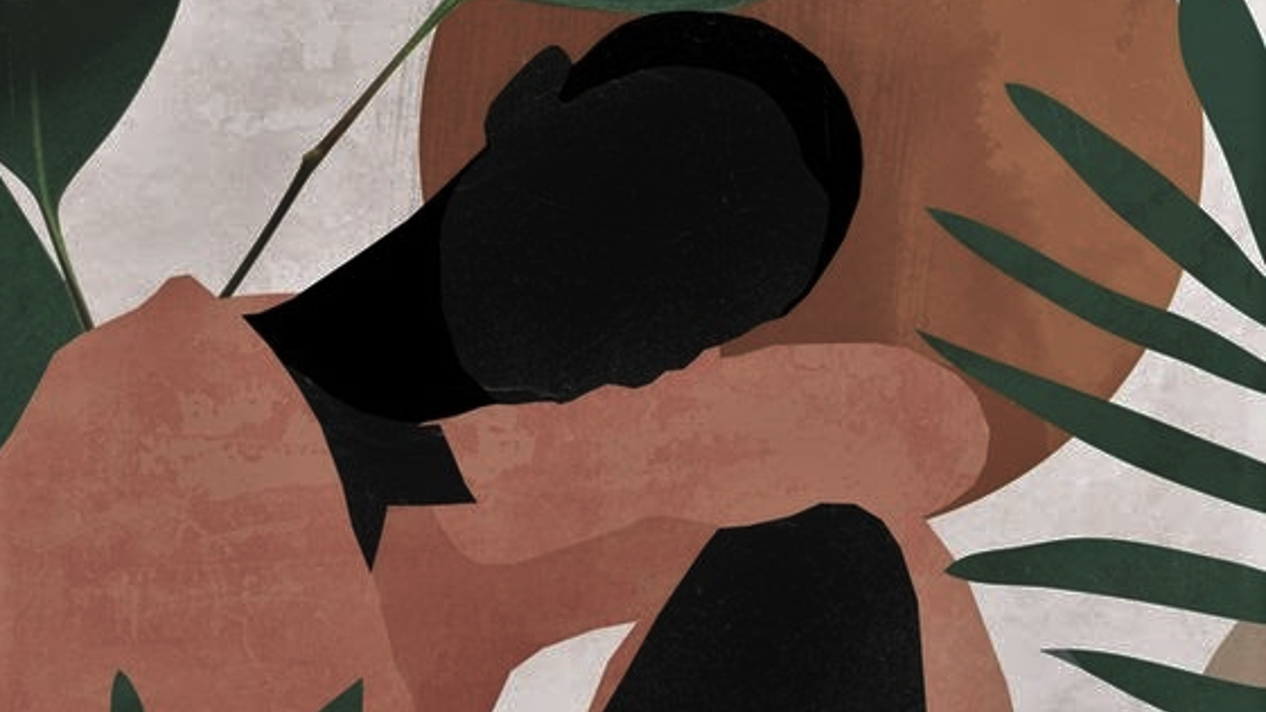
For our final project of MITidm core year, my team was connected with an industrial group based in Uganda who was interested in starting a local brand in the menstrual health space that can compete with the popular foriegn brands in the market. With the strong supply of local Ugandan cotton, the group was also looking to have their brand be a means to boost local production and the economy. Handling the finances and partnerships needed to bring this project forward, our client asked us to own the design and development of the product and the brand. As a result, the overall design question that we tackled was:
During this project, I focused on conducting consumer research, developing the brand strategy, and taking part in the design of the venture (business model design, financial modeling, etc.). I was also able to leverage my past experience in materials and product development to aid in the design and testing of our concepts as well.
To start, we wanted to get a sense of needs and pain points, while also determining our target persona. We reached out to those in our personal networks who had spent time in Uganda (and in other countries in East Africa), as well with current locals to conduct 13 interviews focusing on current experiences with menstrual health products, habits and practices with purchasing and selection, as well as general feelings and cultural perceptions around the topic.
Through our research, I pushed for us to focus our efforts on the ‘career woman’ or the professional. The reasons were that they were significantly underserved, they had the agency to make their own purchasing decisions, and they had the ability to set the standard of what’s desirable for all other segments in the market. Focusing on this last point, there weren’t any local brands that provided the level of appeal that this persona desired, and the international brands that benefited from current perceptions of high quality still didn’t meet their specific needs. I saw this whitespace as an opportunity for us, and wanted to use this brand to sway the rest of the market.
Through our interviews (and a broader survey we conducted with 120+ respondents) we uncovered the following desires from our target consumer:
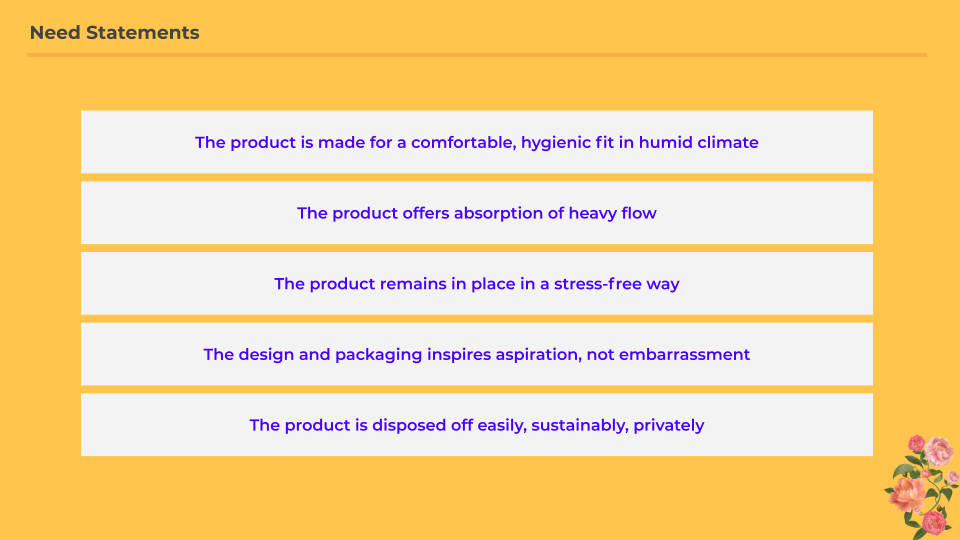
These needs then formed the basis of our product design and our approach to brand and marketing our product.
While we iterated on product concepts to address the functional needs expressed by our persona, we also sought to address the emotional needs expressed through our brand design - and conducted additional interviews and consumer tests to dive deeper into this.
Through our additional interviews and interactions with women in Uganda (and women in other East African countries), we determined that in addition to needing to communicate the functional benefits of our product, our brand must also present an elevated aesthetic, convey authenticity, and promote community amongst and solidarity with our target consumer group.
With this, we came up with packaging concepts and shared these with consumers to get their perspective, get their feedback, and incorporate this feedback into our final brand design. Our intent was to develop brand design concepts that signifcantly different compared to current sanitary pads on shelf and projected a higher aesthetic to our consumer.
Ultimately, we arrived at an overall brand concept to fully satisfy both the functional and emotional needs of the middle to upper class, professional woman in Uganda - moreso than any other product currently in market based on consumer feedback.
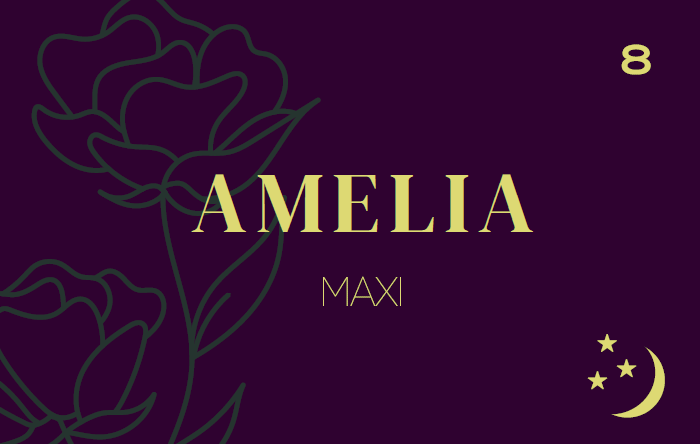
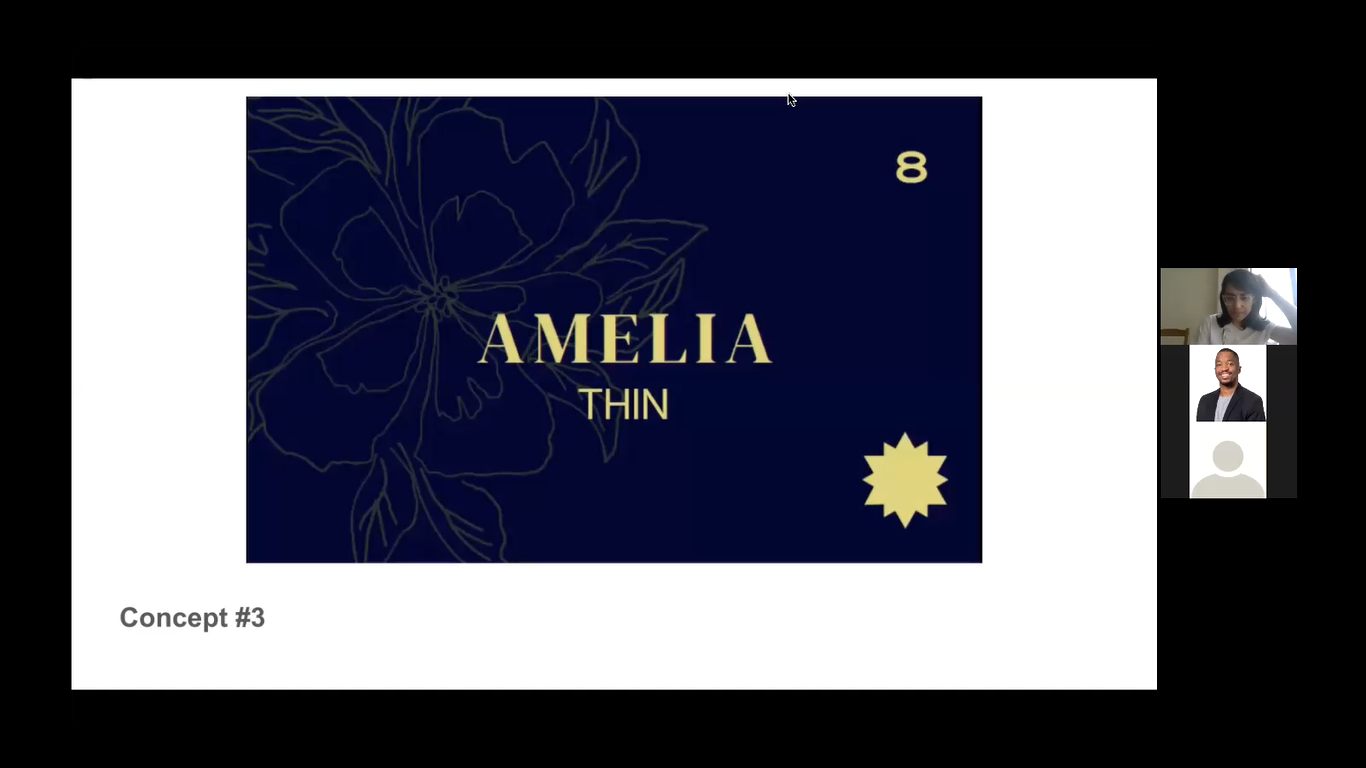
Beyond product and brand design, we also developed the go-to-market strategy, built financial models to inform how we should approach our business model, and also partnered with a manufacturing partner to bring our product design to life and take on the next stage of development.
After building the financial model, taking into account our unit economics, and positioning the brand as a local, premium option for consumers, it was clear that expanding beyond Uganda and taking this product to the entire Continent was a long term strategy that our client should pursue. As a result, we expanded our strategy that outlined our channels of choice (for product and brand communication) to include an overall roadmap that outlined our expansion from urban markets to rural, and from Uganda to Africa as a whole.
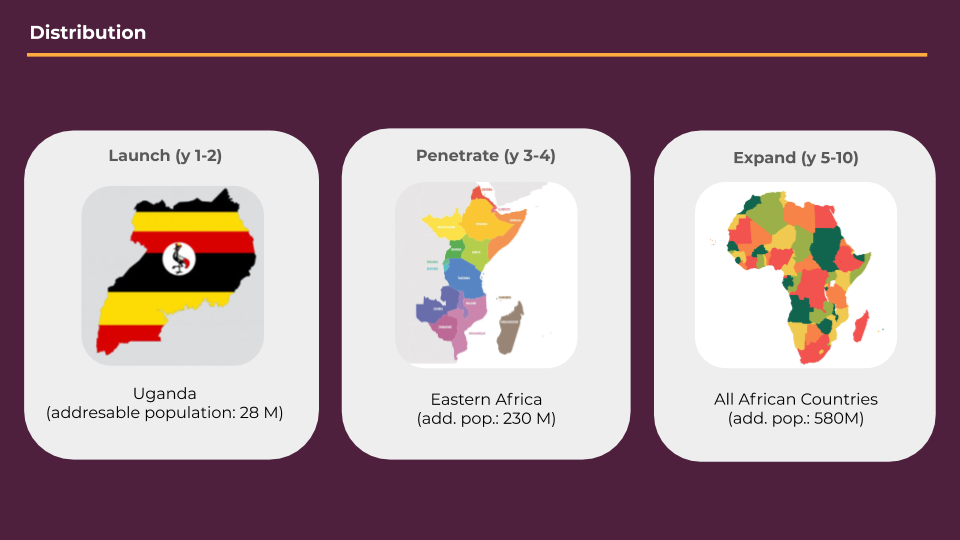
We are currently working with the client to move things forward to the development phase: finalizing intellectual property, partnering with our client and a manufacturer based in Germany to bring our final design concept to life, and preparing for a late 2021 launch.